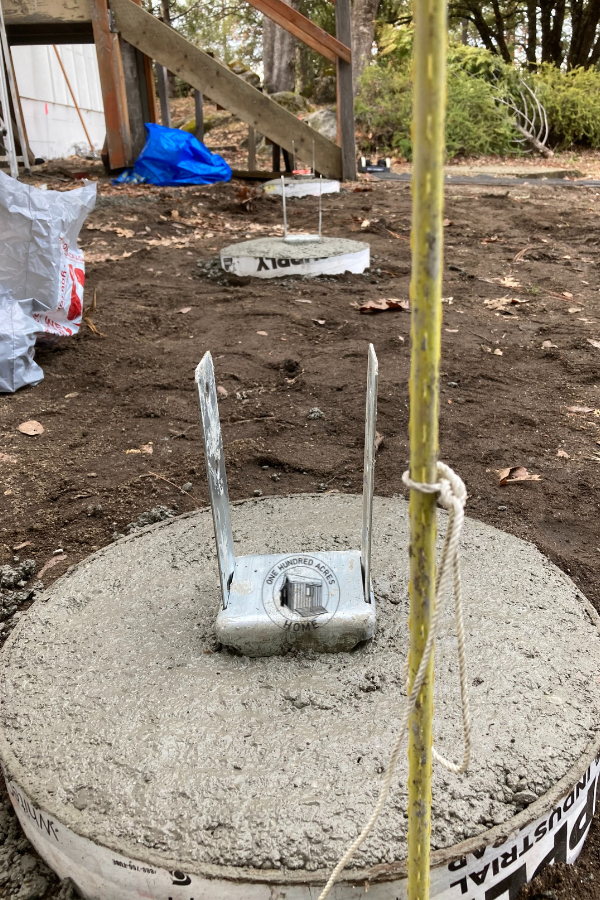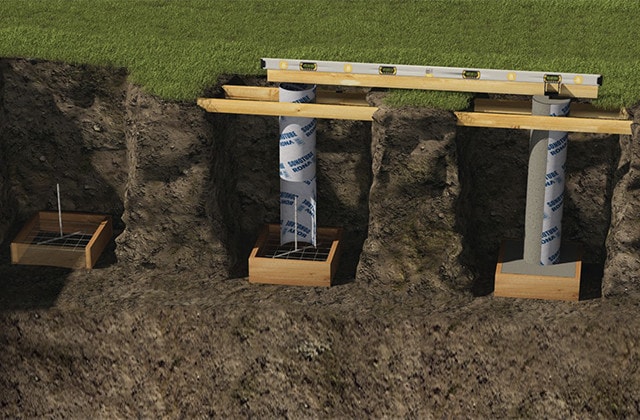Make The Most Of the Life Expectancy of Your Deck With Reliable and Solid Footings
As home owners, we spend a considerable amount of time and resources right into producing the ideal outdoor room. A deck is commonly the centerpiece of that space, supplying a location to unwind, entertain, and enjoy the elegance of nature. Nevertheless, in order to fully maximize the life expectancy of your deck, it is important to guarantee that it is constructed on solid and reputable footings. These footings form the foundation of your deck, providing stability and support, and are usually the difference between a deck that lasts for years and one that requires constant repair work. In this discussion, we will certainly discover the significance of trustworthy grounds, the various kinds of solid ground products, proper setup techniques, and how to preserve and evaluate your deck's footings to stop damages. So, whether you are in the process of looking or building a new deck to improve the long life of your existing one, join us as we uncover the keys to a deck that stands the test of time.
Significance of Reputable Footings
The significance of trustworthy grounds can not be overstated when it comes to making best use of the lifespan of your deck. The grounds function as the structure whereupon the whole framework relaxes, supplying security and support. Without a solid footing, the deck is vulnerable to moving, sinking, and even collapse, which can considerably decrease its life expectancy and position safety risks.

Picking the best type of footing is additionally crucial. The most typical kinds consist of concrete grounds, helical piers, and sonotubes. Elements such as soil conditions, climate, and the size of the deck will certainly identify the most appropriate option. Hiring a professional to analyze the soil, style the grounds, and make certain appropriate installment is very recommended.
Buying trustworthy grounds might include extra cost and effort upfront, but it is a worthwhile financial investment that will certainly add to the lasting longevity and safety and security of your deck. By making sure a strong foundation, you can enjoy your deck for several years to come, knowing that it is developed to endure the test of time.
Sorts Of Strong Footing Materials
To ensure the security and durability of your deck, it is necessary to think about the various sorts of solid footing materials readily available. The option of footing material is crucial as it provides the essential support and stability to hold up against the weight and tons of the deck structure.
One reputable and common product used for deck grounds is concrete. Concrete footings are durable and give exceptional stability. They can be put directly right into the ground or utilize precast concrete grounds for simpler installation. An additional choice is helical piers, which are steel shafts with helical plates that are screwed right into the ground. These piers provide excellent load-bearing capability and can be used in numerous soil conditions.
For locations with poor dirt problems, such as loosened or extensive dirts, a footing system that uses steel or composite piers might be chosen. Deck Footings. These piers are driven deep right into the ground to get to stable soil layers, making certain the security of the deck
In some cases, deck footings can additionally be constructed using treated lumber. It is crucial to make certain that the lumber is properly treated to withstand rot and degeneration created by exposure to dampness and pests.
When choosing a ground product for your deck, it is critical to think about factors such as dirt conditions, environment, and regional building ordinance. Consulting with an expert service provider or structural designer can aid establish one of the most suitable footing material for your details deck task.
Proper Installation Techniques for Footings
Considering the significance of guaranteeing stability and durability for your deck, it is necessary to comprehend the proper installation techniques for footings. The success of your deck task counts heavily on the integrity of its structure, which is why adhering to the right setup methods page is important.
Firstly, it is essential to identify the ideal dimension and deepness of the footings based on the layout and tons demands of your deck. This details can be acquired from developing codes or through consultation with an architectural engineer. As a general regulation, grounds need to go to least 12 inches in size and prolong below the frost line to protect against working out or shifting.
As soon as the dimensions are developed, the next step is excavation. Digging the openings for the footings need to be performed with accuracy, making certain they are deep enough and have a level bottom. Deck Footings. This will certainly provide a secure base for the grounds
To additionally improve the security of the footings, it is suggested to use a concrete blend with a stamina of at least 3,000 psi. This will certainly guarantee the grounds can endure the weight and pressures put in by the deck.
During installation, it is necessary to keep the grounds level and lined up properly. This can be accomplished by making use of a level and string lines to lead the placement of each ground.
Maintaining and Checking Your Deck's Grounds
Routine upkeep and detailed evaluations are crucial for guaranteeing the lasting stability and safety of your deck's grounds. With time, footings can yield to tear and wear, weather condition problems, and soil movement, which can jeopardize their architectural honesty. To maximize the lifespan of your deck's footings, it is vital to implement a regular maintenance routine and carry out detailed inspections.

Additionally, it is vital to examine grounds for any indications of damages or degeneration. This consists of checking for fractures, divides, or crumbling concrete, in addition to any kind of signs of activity or settlement. Any type of concerns need to be attended to promptly to stop more damage and make sure the security of the deck.
Furthermore, it is suggested to evaluate the bordering dirt for any type of indications of erosion or moving. Dirt motion can affect the stability of the grounds, so it is essential to address any type of soil-related concerns immediately.
Signs of Footing Damages and How to Address Them
Footing damages can posture major dangers to the security and safety of your deck, making it important to immediately recognize and address any type of signs of deterioration. One of one of the most typical signs of footing damages is sinking or working out of the deck. This can happen due to soil erosion, poor footings, or bad building techniques. It is critical to take instant action to protect against more damages if you notice that your deck is uneven or leaning. An additional indication of footing damages is crumbling or splitting of the concrete footings. This can be created by freeze-thaw cycles, too much dampness, or bad quality concrete. It is important to have them examined and fixed by a professional if you observe any type of splits or wear and tear in the grounds. Additionally, if you see any type of motion or changing of the deck, such as a deck that really feels unsteady when walked on or totters when weight is used, it might be an indication of footing damage. In such instances, it is suggested to talk to an architectural engineer or an expert contractor to examine the extent of the damages and determine the proper course of activity. Bear in mind, resolving footing damages promptly can assist guarantee the long-term security and security of your deck.
Final Thought
Finally, ensuring the reliability and stamina of footings is critical for optimizing click the life-span of your deck. By using strong footing materials and correctly installing them, you can stop damage and maintain the stability of your deck. Regular maintenance and evaluations will likewise assist determine any type of signs of footing damage and allow for timely repair work. Eventually, taking these steps will assist protect the stability and long life of your deck.
These footings create the structure of your deck, providing security and assistance, and are commonly the difference between a deck that lasts for years and one that needs continuous repairs. In this conversation, we will certainly explore the relevance of dependable grounds, the various kinds of solid footing products, correct setup techniques, and just how to preserve and inspect your deck's grounds to stop damage.Normal upkeep and thorough examinations are necessary for guaranteeing the long-term security and safety of your deck's grounds. Keep in mind, addressing ground damage without delay can assist guarantee the long-term stability and security of your deck.
By using strong ground materials and effectively installing them, you can protect against damage and keep the stability of your deck.